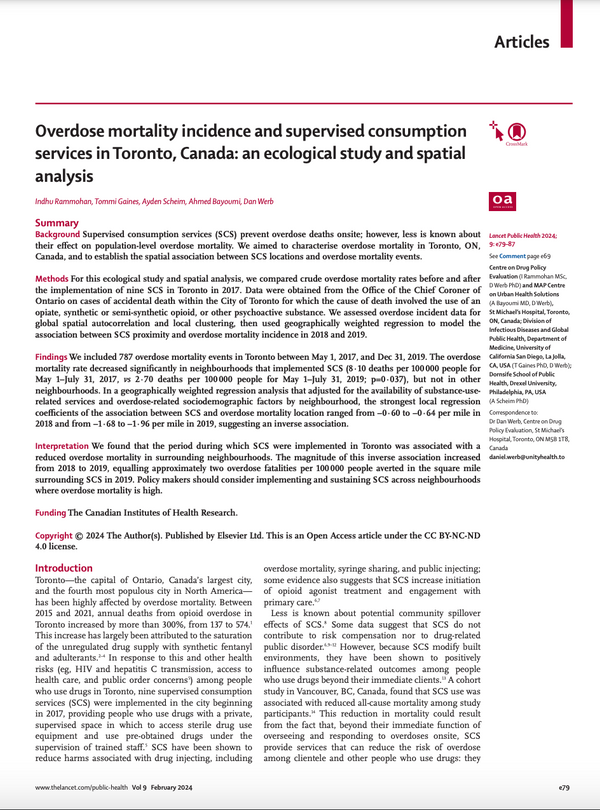Lancet Public Health
Incidence de la mortalité par overdose et services dans le domaine de la consommation à moindres risques à Toronto, Canada : une étude écologique et une analyse spatiale
Rammohan et al. font état d'une diminution des taux de mortalité par overdose dans les régions disposant de services de consommation à moindres risques, ce qui souligne la nécessité et la valeur de ces dispositifs. Pour en savoir plus, en anglais, veuillez lire les informations ci-dessous.
Background
Supervised consumption services (SCS) prevent overdose deaths onsite; however, less is known about their effect on population-level overdose mortality. We aimed to characterise overdose mortality in Toronto, ON, Canada, and to establish the spatial association between SCS locations and overdose mortality events.
Methods
For this ecological study and spatial analysis, we compared crude overdose mortality rates before and after the implementation of nine SCS in Toronto in 2017. Data were obtained from the Office of the Chief Coroner of Ontario on cases of accidental death within the City of Toronto for which the cause of death involved the use of an opiate, synthetic or semi-synthetic opioid, or other psychoactive substance. We assessed overdose incident data for global spatial autocorrelation and local clustering, then used geographically weighted regression to model the association between SCS proximity and overdose mortality incidence in 2018 and 2019.
Findings
We included 787 overdose mortality events in Toronto between May 1, 2017, and Dec 31, 2019. The overdose mortality rate decreased significantly in neighbourhoods that implemented SCS (8·10 deaths per 100 000 people for May 1–July 31, 2017, vs 2·70 deaths per 100 000 people for May 1–July 31, 2019; p=0·037), but not in other neighbourhoods. In a geographically weighted regression analysis that adjusted for the availability of substance-userelated services and overdose-related sociodemographic factors by neighbourhood, the strongest local regression coefficients of the association between SCS and overdose mortality location ranged from −0·60 to −0·64 per mile in 2018 and from −1·68 to −1·96 per mile in 2019, suggesting an inverse association.
Interpretation
We found that the period during which SCS were implemented in Toronto was associated with a reduced overdose mortality in surrounding neighbourhoods. The magnitude of this inverse association increased from 2018 to 2019, equalling approximately two overdose fatalities per 100000 people averted in the square mile surrounding SCS in 2019. Policy makers should consider implementing and sustaining SCS across neighbourhoods where overdose mortality is high.
